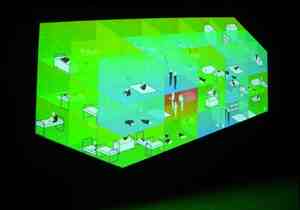Philippe Rahm stars the text by compering sustainable development policies with the transformation of design by digital technologies, he mentions that the difference between the two is their visual impact, this is because sustainable development may not affect the physical structure or appearance of a building because it affects things that we don’t see like space and energy. He also mentions the big roll the building industry plays harming the environment with greenhouse gases during their process of climate control in building interiors.
The main idea of the text ranges in the link between function form and climate and the order in which these three word are prioritized. In the 19th century the idea that “forms follows function” gave architecture an “appropriate form” to function in a predetermined way at the social, technical and ergonomic levels, architecture being simply the expression of a program. In the 1960s this idea was challenged by Louis Kahn and others, who asserted that “function follows form”. The idea rises because needs and activities can change, this means that architectural programs and functions are continually in flux, so a system of hierarchies was proposed. These hierarchies determine an ensemble of spaces in which each one was define in relation to the others, giving rise to a system rigid in structure, but flexible in terms of program. Philippe Rahm proposes that the aim of our work is to consider the form/function relationship from the point of view of architectures contingent relationship with climate.
The idea Rahm purposes of “form and function follow climate” is based on the idea of making architecture free of formal and functional predeterminations, this means going back in time, working towards a traditional approach to design in order to achieve a new spatial organization in which function and form can emerge spontaneously in response to climate. An example of architecture where form and function follow climate are houses in the old neighborhoods of Bagdad, these are vertical stratifications that produce interior spaces that varied in temperature humidity and luminosity. In these houses one could find in the vertical way temperature variations that go from 30⁰C in the cellar up to 50⁰C on the roof, humidity variations that go from 70% in the cellar up to 15% on the roof, and light variations where in the cellar you get almost no light on the roof you’ll get many. According to the season and time of day, occupants moved from the cellar, the rooms in between and the roof in search of the appropriate environmental conditions.
Philippe Rahm concludes the text mentioning that our interest should be how an architectural problem or solution has the potential to give rise to new or unforeseeable ways of living. We should be able to do this by opening interpretation and freeing architecture from function, facilitating its response to a climatic problem, the rise of new technologies or a new function.
A possible topic for my personal research could start from the idea of opening to interpretation and freeing architecture from function, proposing the idea that “form and function follow the problem”. In the present the problem our society is focused in repairing is climate change, but if in architecture this issue is always attended and becomes a daily process in design, other new and unforeseen problems could be addressed by architecture. The main idea is to be able to prevent this new problems or at least be prepared to confront them with architecture.


